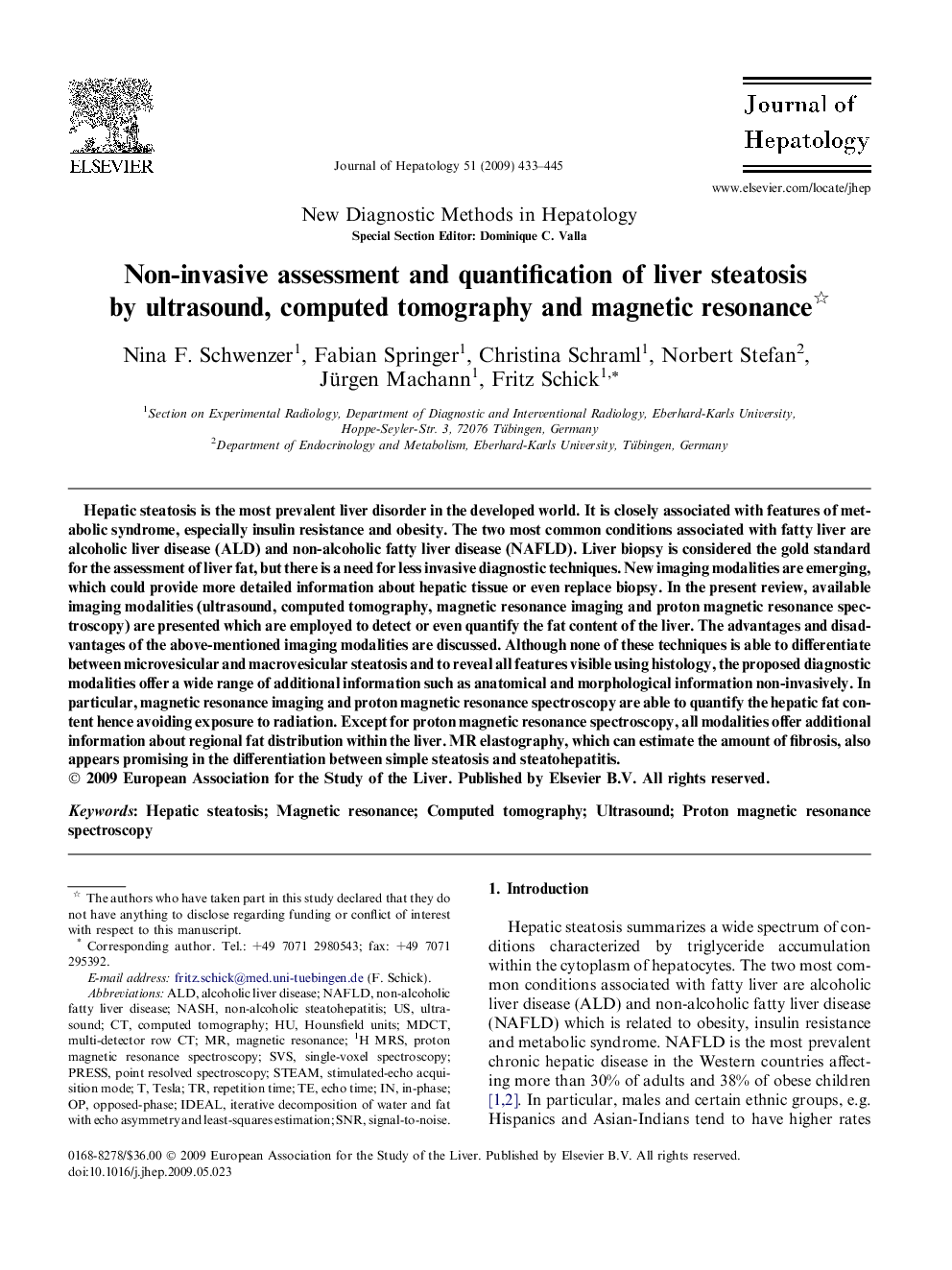| Article ID | Journal | Published Year | Pages | File Type |
|---|---|---|---|---|
| 6109591 | Journal of Hepatology | 2009 | 13 Pages |
Abstract
Hepatic steatosis is the most prevalent liver disorder in the developed world. It is closely associated with features of metabolic syndrome, especially insulin resistance and obesity. The two most common conditions associated with fatty liver are alcoholic liver disease (ALD) and non-alcoholic fatty liver disease (NAFLD). Liver biopsy is considered the gold standard for the assessment of liver fat, but there is a need for less invasive diagnostic techniques. New imaging modalities are emerging, which could provide more detailed information about hepatic tissue or even replace biopsy. In the present review, available imaging modalities (ultrasound, computed tomography, magnetic resonance imaging and proton magnetic resonance spectroscopy) are presented which are employed to detect or even quantify the fat content of the liver. The advantages and disadvantages of the above-mentioned imaging modalities are discussed. Although none of these techniques is able to differentiate between microvesicular and macrovesicular steatosis and to reveal all features visible using histology, the proposed diagnostic modalities offer a wide range of additional information such as anatomical and morphological information non-invasively. In particular, magnetic resonance imaging and proton magnetic resonance spectroscopy are able to quantify the hepatic fat content hence avoiding exposure to radiation. Except for proton magnetic resonance spectroscopy, all modalities offer additional information about regional fat distribution within the liver. MR elastography, which can estimate the amount of fibrosis, also appears promising in the differentiation between simple steatosis and steatohepatitis.
Keywords
1H MRSSVSMDCTSNRNAFLDALDHepatic steatosisNon-alcoholic steatohepatitisIdealSteamalcoholic liver diseasenon-alcoholic fatty liver diseaseTeslaMagnetic resonancecomputed tomographyIn-phaseecho timeRepetition timeSignal-to-noiseMulti-detector row CTProton magnetic resonance spectroscopyUltrasoundPRESSpoint resolved spectroscopyNash Hounsfield units
Related Topics
Health Sciences
Medicine and Dentistry
Gastroenterology
Authors
Nina F. Schwenzer, Fabian Springer, Christina Schraml, Norbert Stefan, Jürgen Machann, Fritz Schick,
